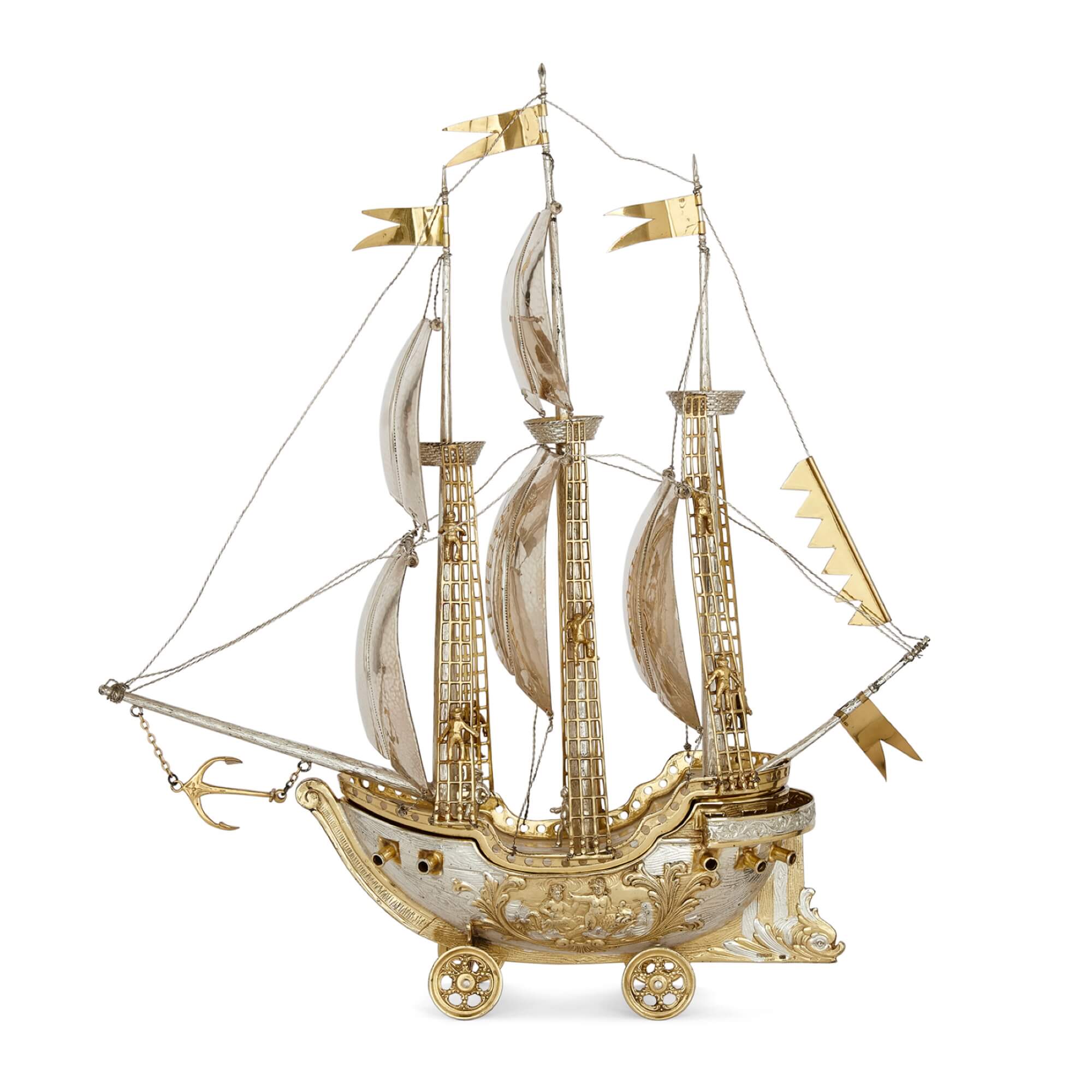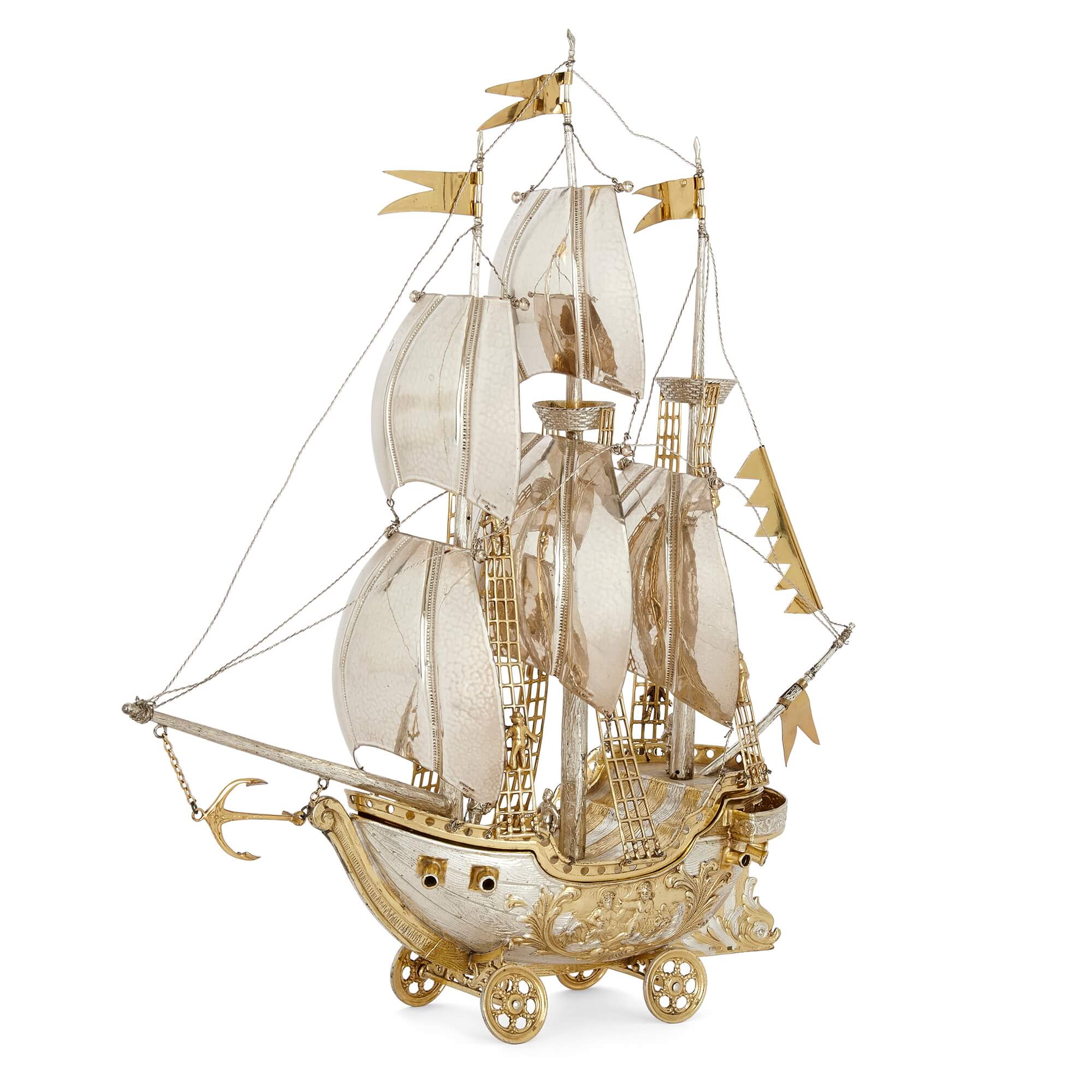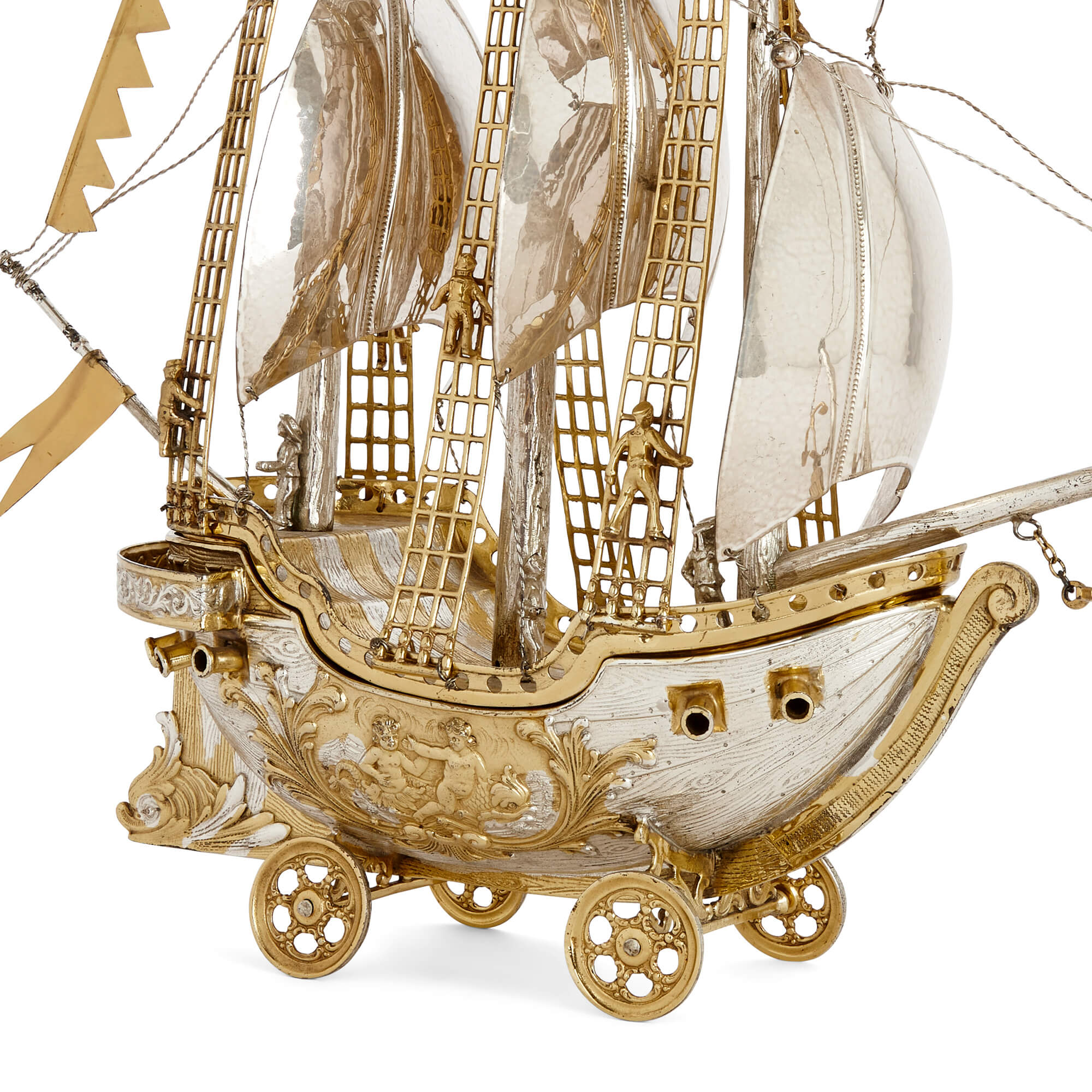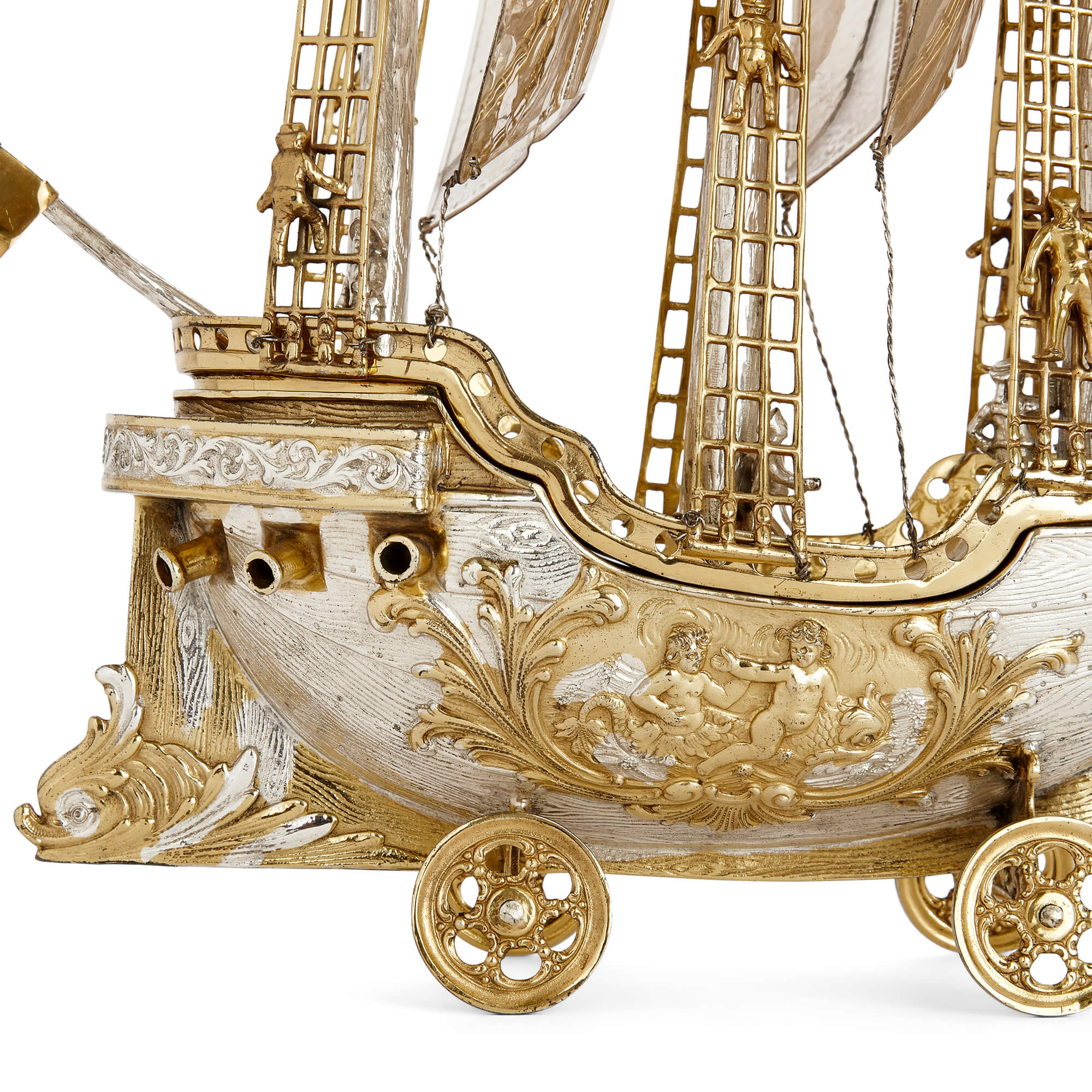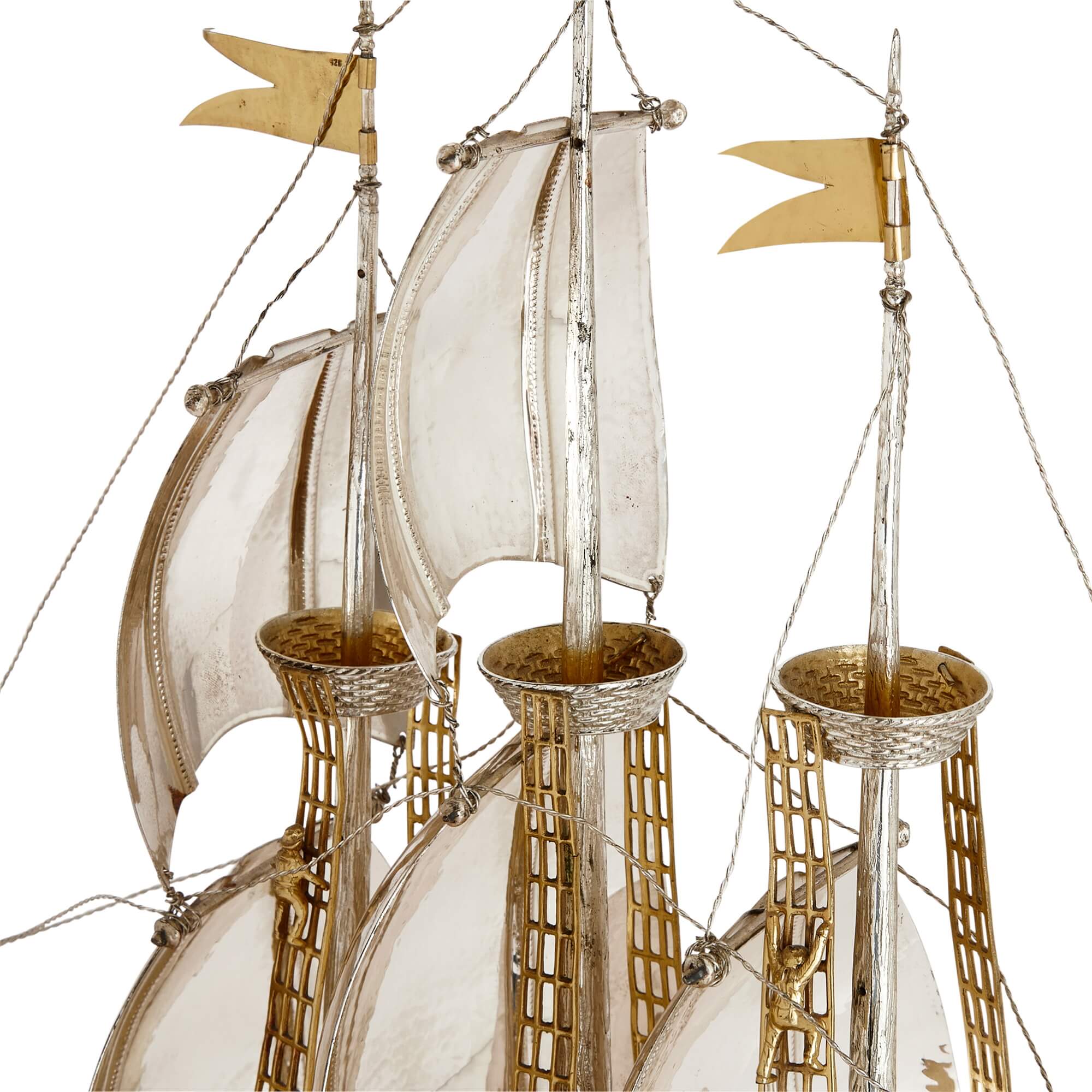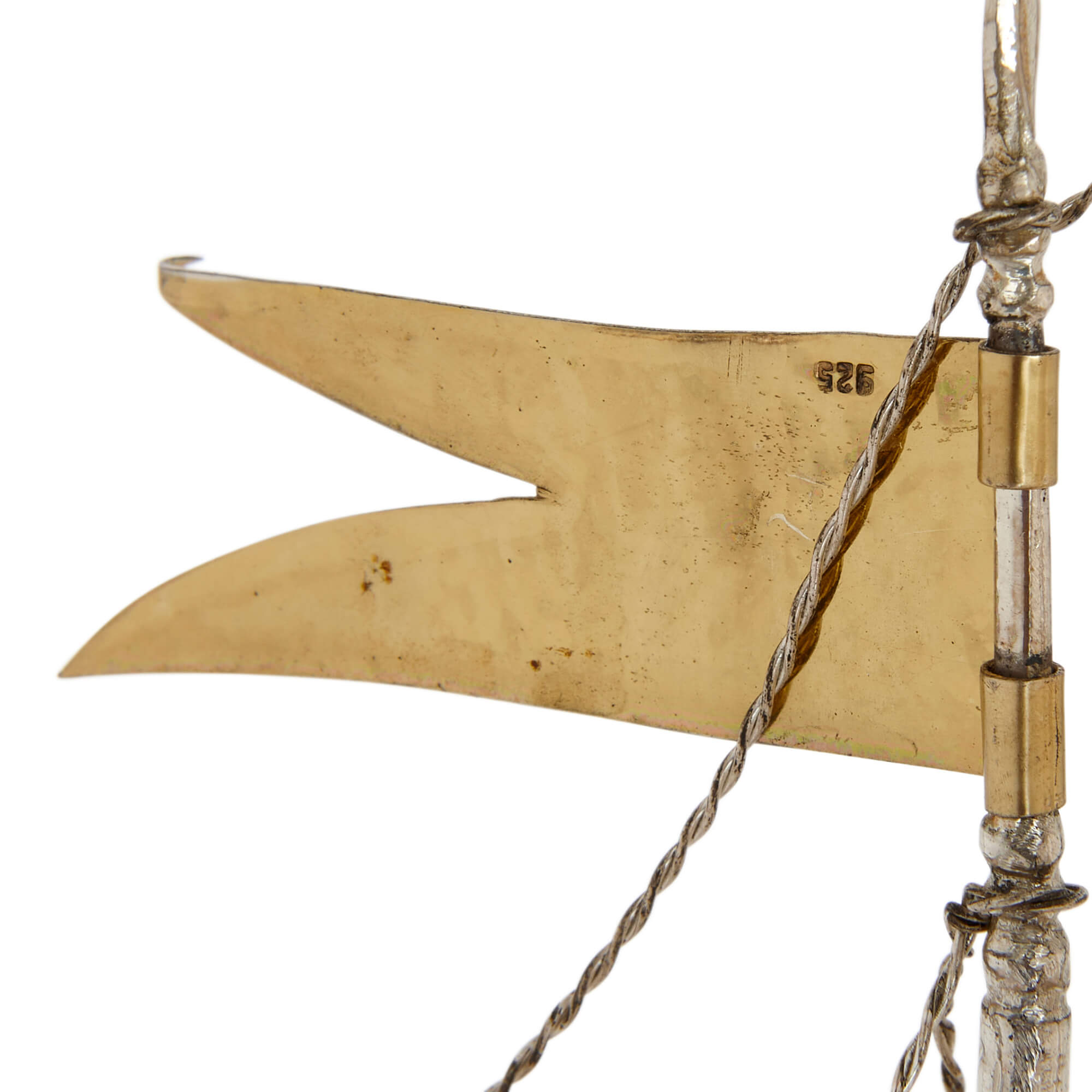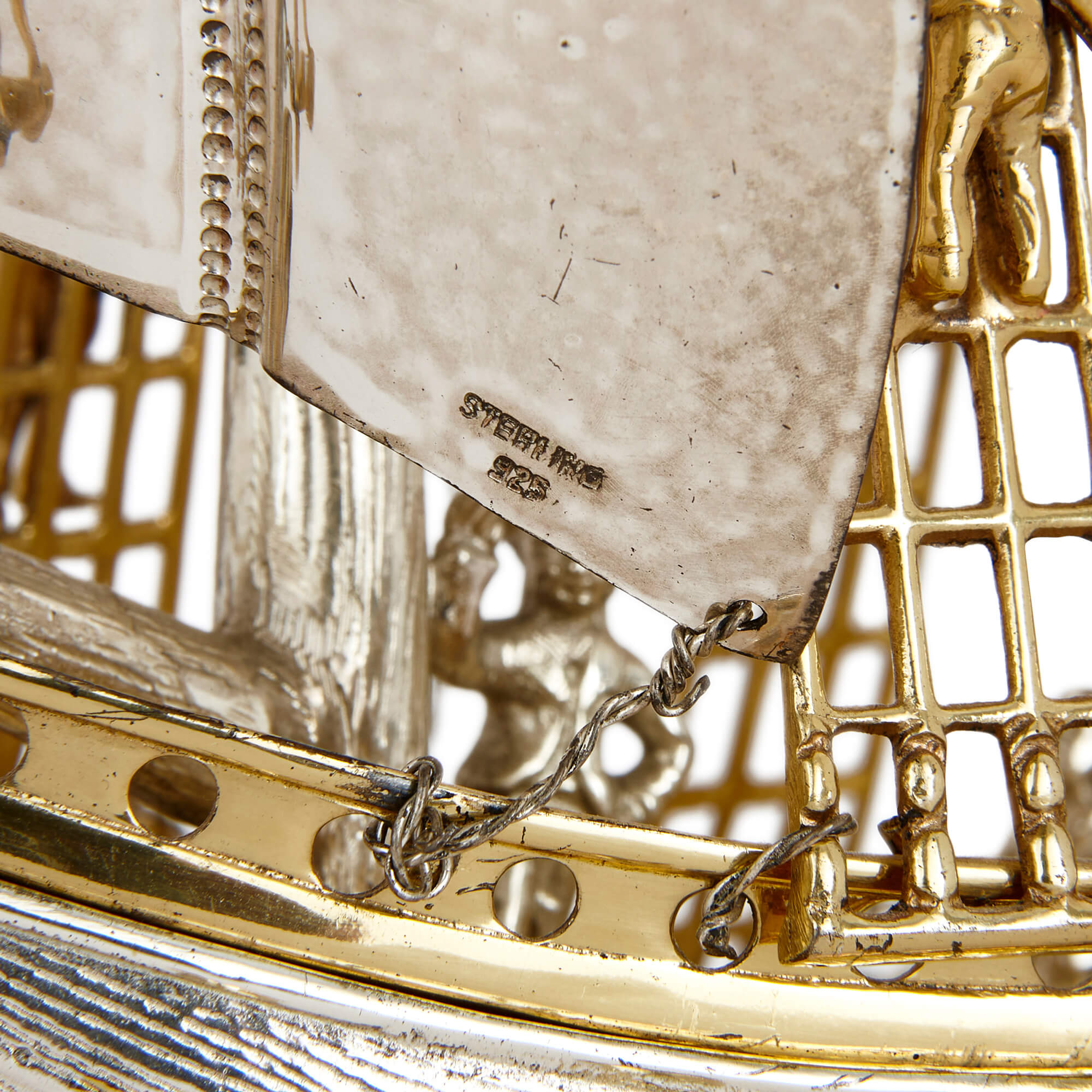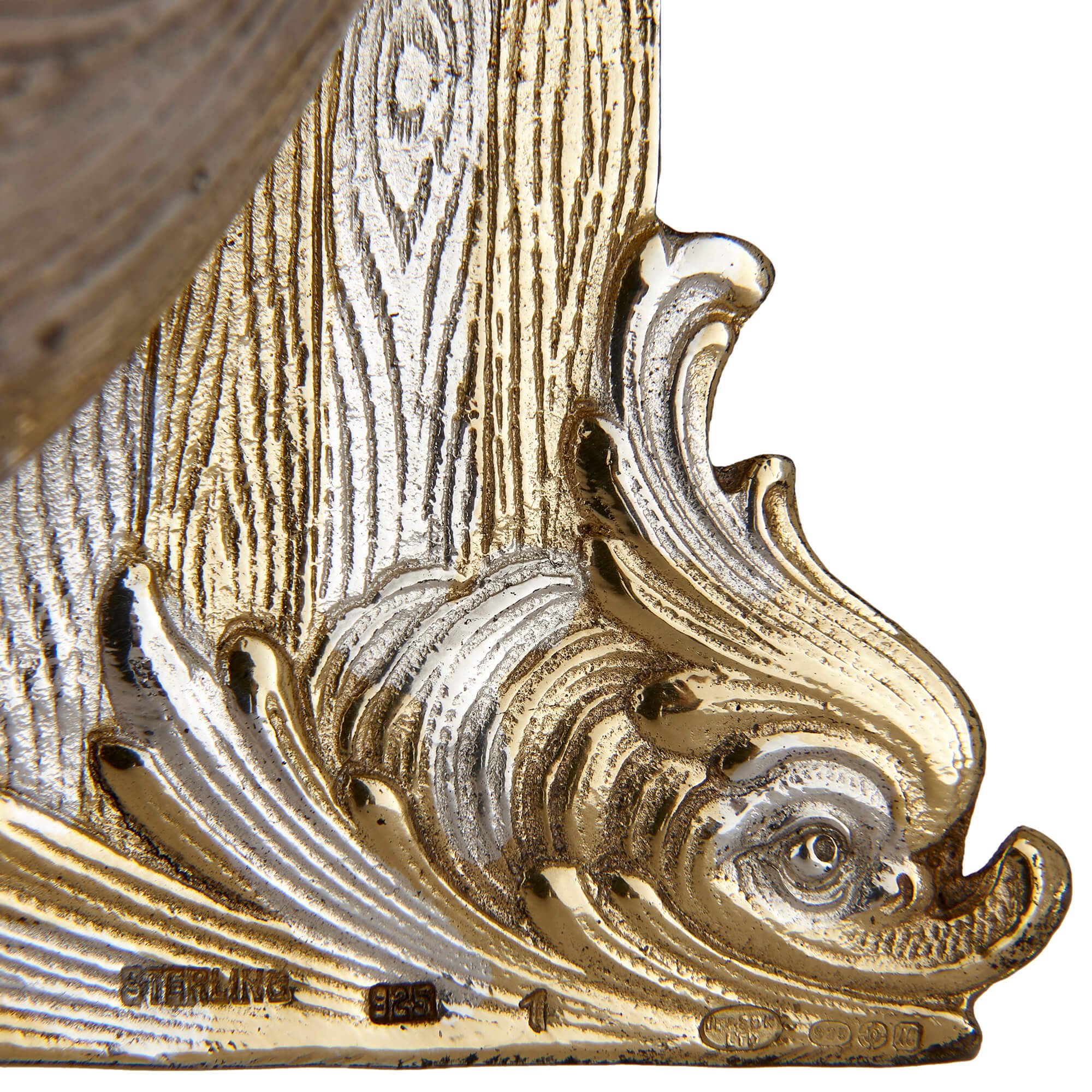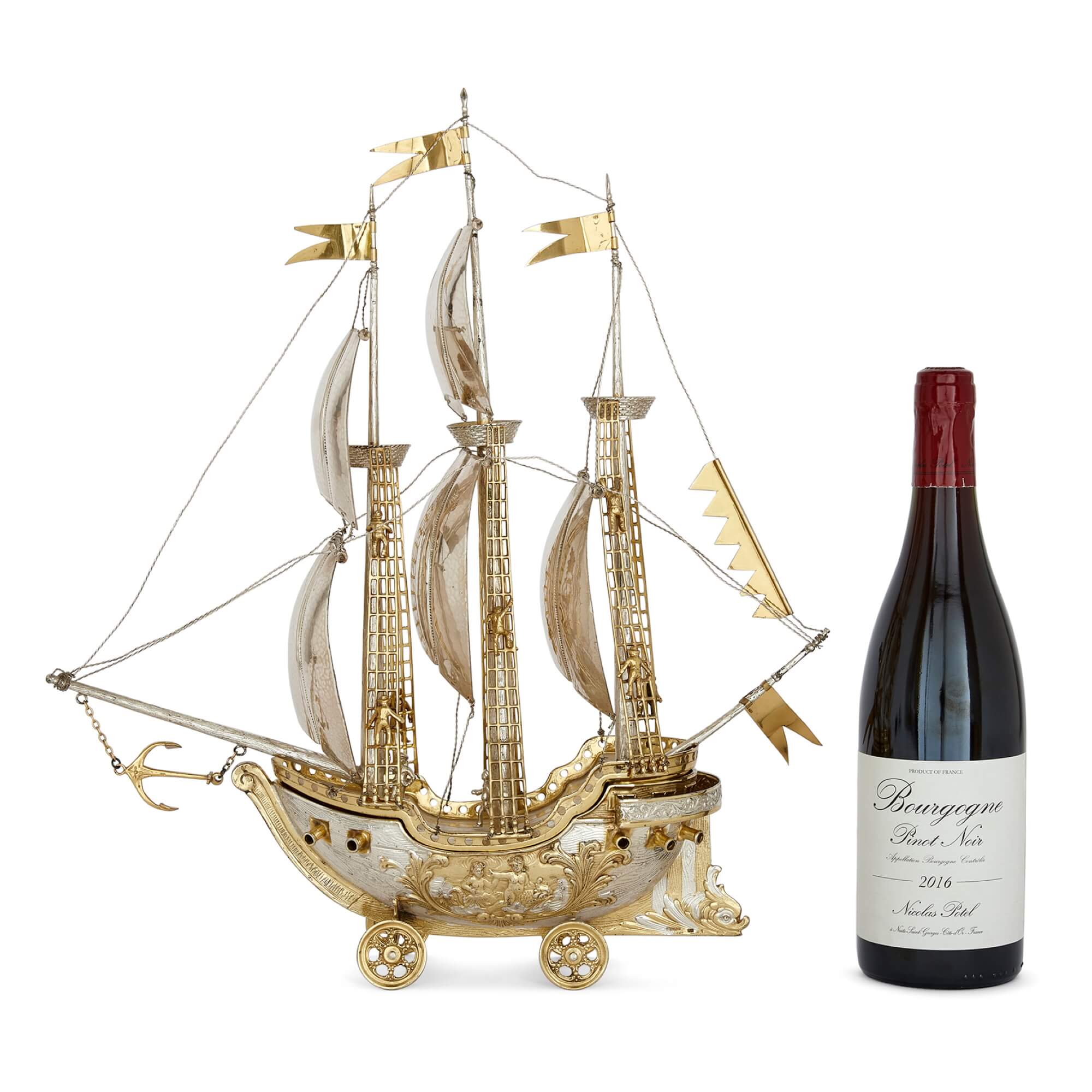This very fine nef is superbly made from silver and vermeil to depict a three-mast galleon. A nef is a type of impressive and intricate decorative object, often used as a dining table centrepiece.
The delicate piece is wonderfully detailed. The charming figures climbing the shrouds and walking on the deck add an intriguing feature to the design, aiding in the creation of a marine-themed story. The ship’s body is cast with high relief scrolling motifs as well as figures of putti. These can be seen riding on a Rococo-style sea creature, most likely a dolphin. A similar animal adorns the back of the galleon. The combination of silver and vermeil enhances the complex detailing cast by the makers.
The galleon stands on four elegant wheels. The upper deck is detachable and can be lifted to reveal a hollow interior. The nef is marked ‘925’ and ‘STERLING’ in several places. In addition, it bears an ‘IFR & Son Ltd’ mark alongside the date code for 1994. This stands for Israel Freeman & Son Ltd who was an importer of silver.
The history of nefs begins in the 13th century France. Particularly popular during the Middle Ages and Renaissance, pieces of this type would be made from precious metals. Some designs included storage spaces for salt, spices, cutlery, napkins or even wine bottles. From the 14th century more elaborate designs began to be made with, for example, wheels like the model in Mayfair Gallery’s collection. The wheels would enable to user to easily pass the piece along to other members of the dinner party. Due to its high quality design and superb make, nefs acted as status symbols, often being placed in front of the most important person at the table.
The piece weighs approximately 1,520 grams.




